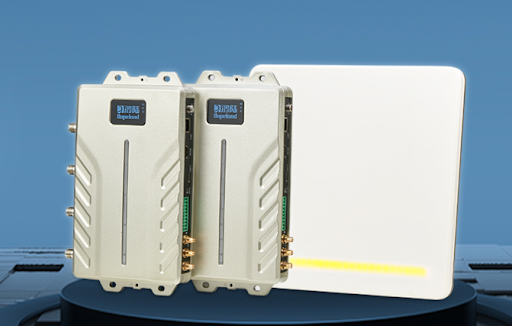To sign up for our daily email newsletter, CLICK HERE
The logistics industry has been developing rapidly, thanks to globalization and surging e-commerce. Naturally, this causes a considerable chain effect on the warehouses, regarded as relay stations for goods. Considering the massive packages the warehouse has to deal with daily, they face a higher requirement for efficiency and accuracy.

However, with the introduction of RFID in warehousing, things changed. RFID radio frequency identification technology uses electromagnetic fields to identify and track tags attached to objects automatically. Within the whole RFID system are numerous RFID devices. But how does RFID technology function in warehousing exactly?
Applying RFID Equipment in Warehousing
There are three main components regarding the application of RFID equipment in warehousing. These components will process items’ information in different ways, allowing warehouses to run quickly and efficiently. And here, we will go through the components one by one.
An RFID label is a type of UHF RFID tag, similar to the barcode, which holds information about the entry and exit of goods, so you can accurately record their location. RFID labels and readers belong to the information collection layer in terms of the RFID system. All the information, including the location and date, will be transmitted to the Enterprise Resource (ERP) System for further application. RFID label is part of the powerful device for digitizing the warehouses, which can help to save the searching time and energy for the warehouses’ managers.
The main benefit of using an RFID label is that it helps reduce the dependency on people and reduces man-made errors.
The long-range RFID reader is used to scan the UHF RFID tags. An RFID reader is a network-connected device that provides the user with operation guidance, on-site data, and data entry.
Again, employing RFID in warehousing makes the warehousing personnel’s job simpler, faster, and more organized.
Finally, RFID tags communicate with RFID readers and antennas via electromagnetic waves in RFID warehouse management. The antenna includes an electric conductor and a conductor that radiates electromagnetic fields isotropically. The RFID tag with an antenna coil facilitates the data extraction process.
What Has RFID Technology Brought to the Industry

One of the greatest effects of RFID in warehousing is that it realizes intelligent decisions. For example, they can help pick the most suitable position for the inventory, with the help of their powerful calculation in terms of the ordering times and ordering quantity to distinguish goods’ popularity, therefore, the most popular item can be put in an easy-to-find position to facilitate the further goods picking.
Accuracy increases with data stored electronically and the decreasing artificial stepping in. RFID management can track the location of all goods with precision. The items with RFID labels can be scanned remotely. With the RFID readers, workers can scan hundreds of UHF RFID tags on the items in a second, efficient but maintain higher accuracy.
How to keep the warehouse order has been a headache for many owners. A disordered warehouse will make item picking more difficult and decrease efficiency, which might bring economic costs.
As all data is stored in RFID tags/labels, there is a record of every product movement. Therefore, there is little discrepancy or confusion with RFID in warehousing.
The Realization of Intelligent Warehousing Management
Everyone wants to find efficient ways to carry out tasks. Reducing human error and time spent documenting and tracking products is a priority in the logistics industry. So, incredible benefits exist with this realization of intelligent warehousing management through RFID technologies.
- Facilitate the storage and delivery process
The fixed RFID reader can extract the information in the RFID tags and transmit the management system, getting away from the low-efficient goods picking way — artificial picking.
Tallying inventory is a headache for most warehouse workers, with seas of goods waiting for checking. But with high efficient RFID readers, which can scan hundreds of tags within seconds, the obstacles can be cleared.
- Visualize the storage situation
Every single item has its recorded position, which can be displayed through a single touch on the reader. And the vacant position can be properly distributed, too.
The bigger the warehouse, the more information it has to handle every day, putting much burden on data analysis. However, with pre-recorded information, the management software can provide various tables to summarize the inventory situation and trends, which is more accurate and comprehensive.
The whole storage and delivery process are being tracked, so there will be little possibility of goods losing. Generally, the whole RFID system can help the warehouse achieve information traceback.
You Need RFID Warehouse Management
Investing RFID in warehouse management is the way forward. When notifying the huge profit in this industry, many RFID devices, good or bad, rush into the market, so where to find reliable RFID devices that can benefit the warehouse management? Head down to Hopeland.

Hopeland is a leading RFID technology company that has gathered decades of experience in this industry. They provide reliable RFID devices, such as RFID tags, readers, smart terminals, and antennas, providing one-stop solutions.
Without further ado, to know more about RFID warehouse management and those related devices, please visit their website: https://www.hopelandrfid.com/.